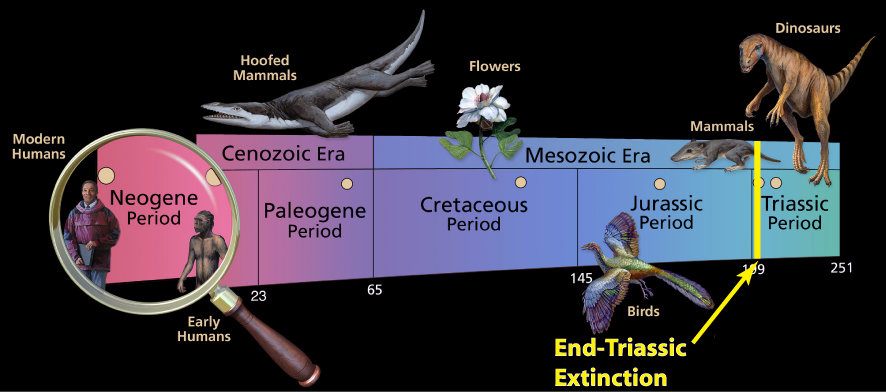The Triassic Extinction Event
What happened?
The Triassic-Jurassic extinction, also called the end-Triassic extinction - it profoundly affected life on Earth, both on land and in the seas, as up to 80% of all land and marine species perished.
When did it happen?
201 million years ago
How did it happen?
While the exact cause is still under debate, many scientists believe that volcanic activity along the Central Atlantic Magmatic Province triggered a release of massive amounts of greenhouse gases. This area covers 11 million km2 and today, its legacy of lava can be seen spread out over a vast area around the North Atlantic Ocean, northwest Africa, southwest Europe, as well as northeast South America and southeast North America. Evidence points to a 600,000 year long period of volcanic activity, with the first 40,000 of particular intensity. By the Early Jurassic period, these eruptions cause Pangaea to split and begin to break up; the northern half to become Laurasia with the southern half becoming Gondwana. During this time, Earth warmed as much as 10-15 degrees Centigrade, saw quadruple CO2 levels and the oceans acidified.
Another common theory is that an asteroid or meteor struck the Earth, and there is lots of evidence to support small asteroid strikes at that time. Other experts believe that climate change was the cause.
The linked video looks at each of these theories in more detail.
